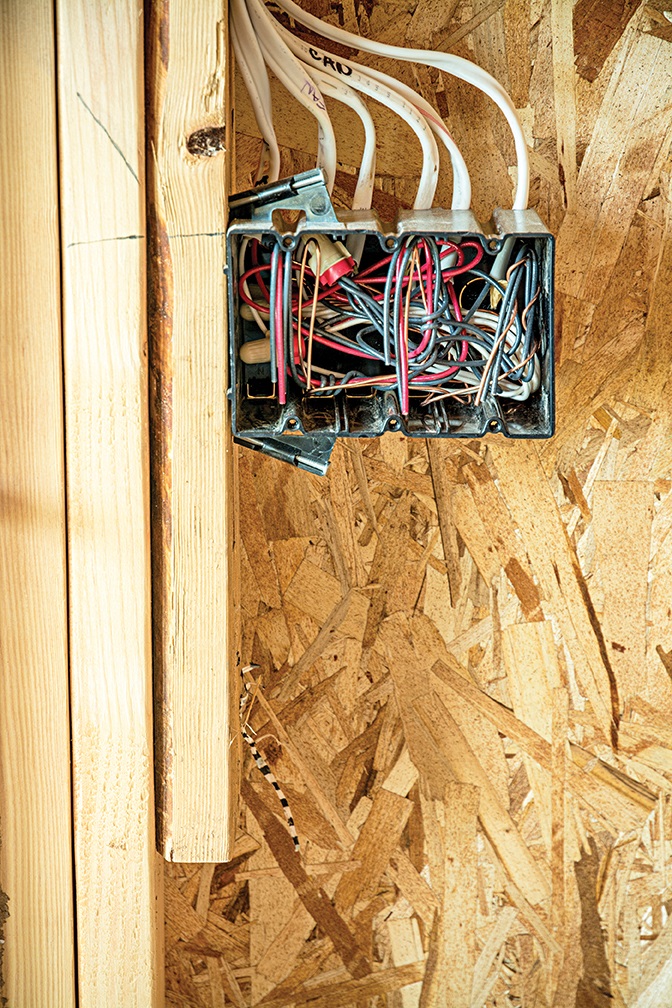Jim Dollard has an extensive background in codes and standards. If you have a query about the National Electrical Code (NEC), Jim will help you solve it. Questions can be sent to [email protected]. Answers are based on the 2014 NEC.
Number of outside feeders supplying dwelling unit
I am in the process of creating a bid for a residential job. The engineering firm requires a 400-ampere (A) meter socket with two 200A service disconnects, installed on a pedestal 80 feet from the dwelling unit, and two underground feeders to the dwelling unit basement with two grouped 200A disconnects. Is this not a violation of NEC 225.30, which limits the number of feeders to one? There is a significant cost issue for a straight 400A meter socket versus a 400A meter socket equipped with the two 200A breakers.
You are correct. Section 225.30 limits the number of feeders to a building or structure from the load side of a service disconnecting means to one feeder. There are five first-level subdivisions that allow more than one feeder, but in this case, none will apply. To be in compliance with the NEC, you will need to bring a single 400A feeder to the dwelling unit. The design calls for the feeder to terminate in the basement, and the disconnect must be located at a readily accessible location nearest to the point of entrance. At that point, there are multiple ways to meet the original design’s intent.
EGC continuity in boxes
Most of the local inspectors require all the equipment grounding conductors (EGCs) in a box to be connected regardless of their wire size or “association.” For example, consider a two-gang box in a kitchen with a small appliance branch circuit and a lighting circuit. Some say it is because of “equipotential” issues. However, the heading of this section in part references the “Continuity ... of Equipment Grounding Conductors.” In the body of this section, it states, “any EGC(s) associated with those circuit conductors shall be connected.” How are these two circuits associated? If the inspectors are correct, why does the NEC not state, “all EGCs in the box shall be connected together”?
The requirement that you are referring to is in Section 250.148, Continuity and Attachment of Equipment Grounding Conductors to Boxes. The parent text for this requirement addresses only EGCs that are (1) spliced within a box or (2) terminated on equipment within or supported by the box. If you are using raceways and the lighting circuit is pulled straight through (no splice) a box that will contain receptacles, 250.148 does not address the EGC for the lighting circuit. However, if you use cable assemblies and splice the EGC in the box, EGCs associated with that circuit must be connected within or to the box. There is no requirement that EGCs of different branch circuits be connected except for where they are spliced within a metal box because, in that case, each branch circuit that is spliced must have the EGC bonded to the box. Splicing all EGCs of different branch circuits is not required and can create a problem by interrupting the grounding continuity of EGCs in all the branch circuits in a box when only one is modified. See 250.148(B), which addresses the issue of lost continuity where a receptacle, luminaire or other device is removed. The NEC would benefit from additional clarity here.
Bonding of flexible fuel gas manifolds
I just read your reply in the March 2014 issue of ELECTRICAL CONTRACTOR as to whether a gas manifold is required to be bonded, and you are right; the NEC does not require the gas manifold to be bonded. A more complete answer might add, “but other codes may require the manifold to be bonded.” The 2012 International Residential Code, Section G2411.1.1 and the International Fuel Gas Code, Section 310.1.1, covers the bonding required when the gas lines are run with corrugated stainless steel tubing (CSST). The codes and the manufacturer require the CSST tubing to be bonded to the electrical service grounding electrode system. The bonding jumper shall connect to a metallic pipe or fitting between the point of delivery and the first downstream CSST fitting, and the jumper shall be no smaller than No. 6 AWG copper wire or equivalent. The intent of the bonding requirement is to help prevent lightning damage to the very thin wall of the CSST tubing.
I have received several questions on this subject. While there may be requirements in other codes, the NEC does not require a bonding conductor to be installed to CSST or any other gas-piping manifold, and for good reason. The manufacturers of CSST exhausted every avenue available in their desire to have the NEC contain such a requirement. Yes, there are municipalities that may require an electrical contractor to install a bonding conductor because of other codes, but not the NEC. As mentioned in this question, the CSST product has a very thin wall, and this is the basis for the problems that have occurred and subsequent manufacturer requirements for bonding. These problems do not occur in products made of a heavier wall. The discussions within the NEC community also raised questions as to whether bonding CSST manifolds will eliminate the problems. In other systems that require bonding, such as cable TV and communications systems, the NEC requires the installer to provide an intersystem bonding termination. The other system installers can make their terminations there. The same can be done for this and other fuel-gas products.
Grounded conductors required for switches controlling lighting loads
Section 404.2(C) is fairly new to the NEC (2011 edition, I believe) and generally requires a grounded (neutral) conductor to be installed at switches that control lighting loads. I understand the rule is intended to provide a means to connect occupancy sensor devices to a 120-volt (V) circuit so the electronics of the device are in the ready mode with the switch in the off position. It makes sense. We don’t want to introduce neutral current on the EGC, which is a violation of other Code rules, such as 250.6, 250.24(A)(5), 250.30(A) and so forth. However, I see two problems with the new rule: there is no requirement to use a device that has an insulated neutral, and the rule only states the grounded (neutral) conductor has to be installed to the switch location. Nothing in the rule covers connecting this conductor to any device. I know it is probably implied, but don’t we need the words in the NEC? Also, if manufacturers of occupancy sensor devices still produce both devices with an insulated neutral and devices that use the equipment grounding conductor for the 120V circuit, what has the rule accomplished? It seems like it would be much more effective to prohibit current from being introduced on the EGC. It seems like the product standard needs to be changed. I’m interested in your take on it.
It is obvious that you have researched this issue carefully, and your observations are correct. The NEC requires a grounded conductor to be brought to most switches controlling lighting loads but does not mandate that you use it. It is a serious problem, and I am personally aware of an installation in which this rule impacted more than 1,000 switch locations. The contractor installed grounded conductors as required, but, since there is no requirement to use them and devices that use the EGC with a very small amount of current are significantly cheaper, the installer used those, and the inspector permitted it.
As you have identified, the goal here is to keep current off of the EGC. I can assure you that the NEC and the product standards communities are actively engaged in getting this right.
My personal opinion is the NEC should be revised to require the grounded conductor to be installed and terminated on a device designed for that purpose in all new installations or renovations. However, an exception should be included to allow devices that use the EGC. This exception should be limited to existing installations to allow them to use motion sensors to conserve energy.
About The Author
DOLLARD is retired safety coordinator for IBEW Local 98 in Philadelphia. He is a past member of the NEC Correlating Committee, CMP-10, CMP-13, CMP-15, NFPA 90A/B and NFPA 855. Jim continues to serve on NFPA 70E and as a UL Electrical Council member. Reach him at [email protected].




